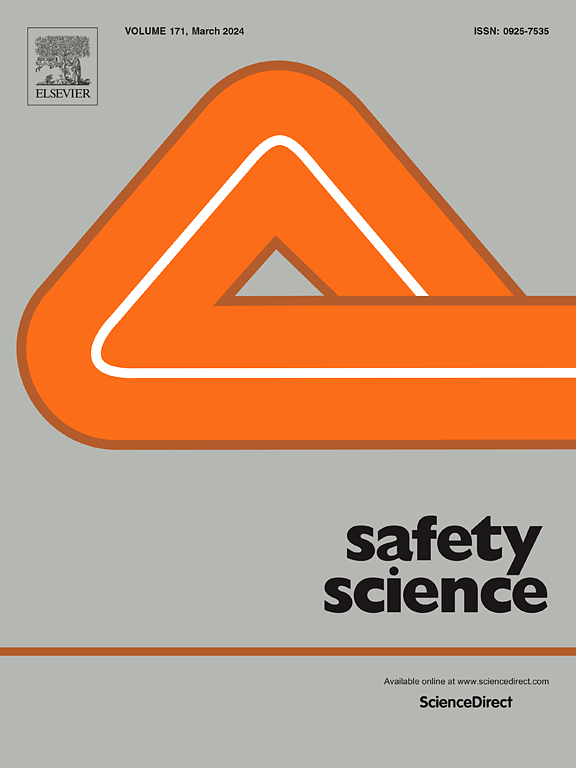Implementing notification strategies in the urbanEXODUS large-scale evacuation model
IF 4.7
1区 工程技术
Q1 ENGINEERING, INDUSTRIAL
引用次数: 0
Abstract
A key consideration during a large-scale incident that affects a community, is how and when to notify the population regarding what protective actions to take. The effectiveness of a notification method is dependent on many factors, such as the medium used, message content, repetition frequency and target area. Therefore, choosing the optimal warning system, or a combination of them, necessitates careful consideration of these factors. Typically, evacuation models do not represent or consider the notification procedures explicitly and hence cannot determine how the specifics of a given notification method, or a combination of them, may affect the evacuation process. Large-scale evacuation tools incorporate the authorities’ notification procedures implicitly by incorporating their effect by increasing the duration of the agents’ response phase. In this work a framework is outlined that allows for the specification of notification methods to be defined within an evacuation model, considering parameters such as the notifications’ initial success rate, their subsequent success rates, in conjunction with time dependent notification areas and a percentage coverage. Using these parameters, a method is outlined that is flexible enough to cover a wide range of notification techniques, from mass notification systems such as location-based SMS and auto diallers, to area specific personnel-based systems, such as door-knocking or mobile loud hailer systems. The proposed notification model is incorporated into the urbanEXODUS large-scale simulation tool and demonstrated through a practical application during an actual tabletop exercise. The study found that incorporating notification procedures in an evacuation model has the potential to aid emergency managers in assessing the outcomes of different notification strategies. The innovation relates to a methodology that enables subject matter experts, such as emergency practitioners, to define notification response profiles within evacuation models. Furthermore, a novel approach for visually summarizing and presenting the simulation results related to the notification scenario and evacuation outcomes has been developed to facilitate communication to a wider audience.
在urbanEXODUS大规模疏散模型中实施通知策略
在影响社区的大规模事件中,一个关键的考虑因素是如何以及何时通知民众采取哪些保护措施。通知方法的有效性取决于许多因素,如使用的媒介、消息内容、重复频率和目标区域。因此,选择最优预警系统,或将其组合,需要仔细考虑这些因素。通常,疏散模型不明确地表示或考虑通知程序,因此无法确定给定通知方法的细节或它们的组合如何影响疏散过程。大型疏散工具通过增加代理人反应阶段的持续时间,将其效果纳入当局的通知程序,从而隐含地纳入当局的通知程序。在这项工作中,概述了一个框架,该框架允许在疏散模型中定义通知方法的规范,考虑通知的初始成功率、后续成功率等参数,以及与时间相关的通知区域和百分比覆盖率。使用这些参数,概述了一种足够灵活的方法,以涵盖广泛的通知技术,从基于位置的SMS和自动拨号器等大规模通知系统,到特定区域的基于人员的系统,如敲门或移动扬声器系统。提出的通知模型被纳入urbanEXODUS大规模模拟工具,并通过实际桌面练习中的实际应用进行了演示。研究发现,将通知程序纳入疏散模型有可能帮助应急管理人员评估不同通知策略的结果。这项创新涉及一种方法,该方法使主题专家(如应急从业人员)能够在疏散模型中定义通知响应配置文件。此外,还开发了一种新颖的方法,可以直观地总结和呈现与通知场景和疏散结果相关的模拟结果,以促进与更广泛的受众的交流。
本文章由计算机程序翻译,如有差异,请以英文原文为准。
求助全文
约1分钟内获得全文
求助全文
来源期刊

Safety Science
管理科学-工程:工业
CiteScore
13.00
自引率
9.80%
发文量
335
审稿时长
53 days
期刊介绍:
Safety Science is multidisciplinary. Its contributors and its audience range from social scientists to engineers. The journal covers the physics and engineering of safety; its social, policy and organizational aspects; the assessment, management and communication of risks; the effectiveness of control and management techniques for safety; standardization, legislation, inspection, insurance, costing aspects, human behavior and safety and the like. Papers addressing the interfaces between technology, people and organizations are especially welcome.
 求助内容:
求助内容: 应助结果提醒方式:
应助结果提醒方式:


